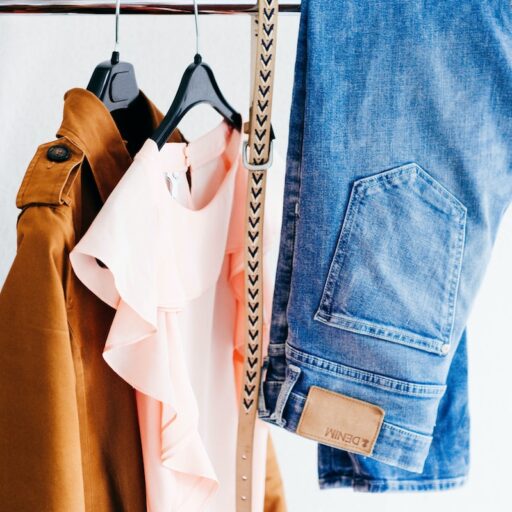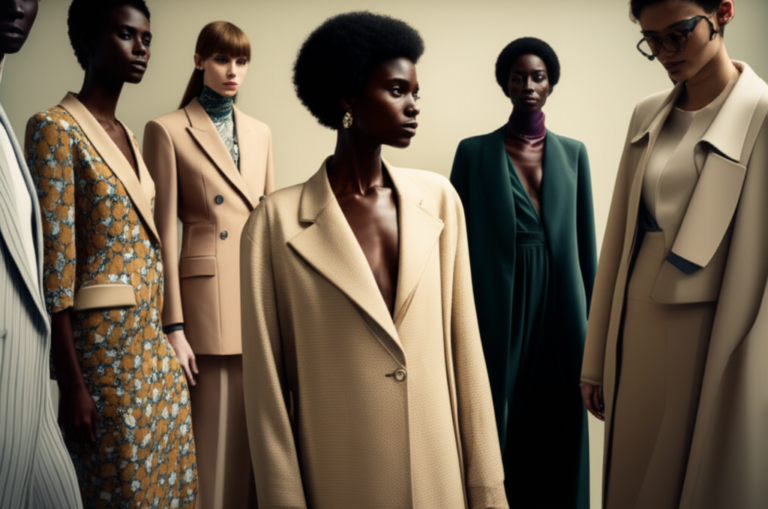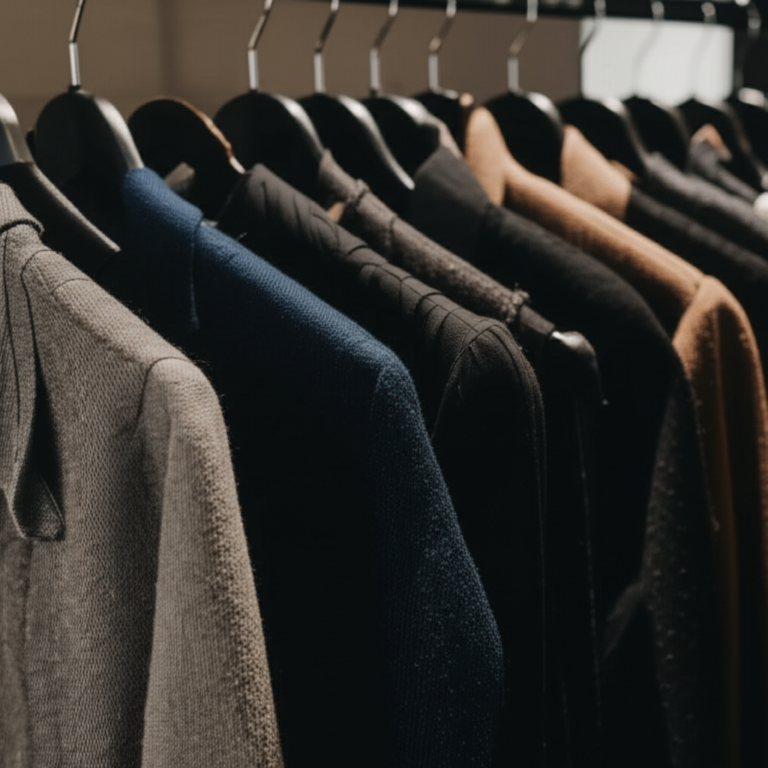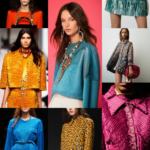Support our educational content for free when you purchase through links on our site. Learn more
15 Must-Know Clothing Brand Statistics Worldwide (2025) 👗
Did you know the global fashion industry is worth nearly $2 trillion and produces over 100 billion garments every year? That’s a staggering amount of style, commerce, and culture swirling around the planet! Whether you’re a fashion aficionado, a budding entrepreneur, or just curious about what makes your favorite brands tick, understanding clothing brand statistics worldwide unlocks a treasure trove of insights. From the dominance of giants like Nike and Zara to the rise of sustainable newcomers, this article dives deep into the numbers shaping the industry’s present and future.
Stick around as we reveal surprising facts about e-commerce’s explosive growth, sustainability’s impact on brand loyalty, and which countries lead the fashion pack. Plus, we’ll share insider tips on how these stats can help you shop smarter and dress with purpose. Ready to decode the global fashion matrix? Let’s get started!
Key Takeaways
- The global apparel market is booming, projected to reach nearly $2 trillion by 2025, driven by both fast fashion and luxury brands.
- Nike, Adidas, and Zara dominate the landscape, but emerging sustainable brands are reshaping consumer expectations.
- E-commerce is revolutionizing fashion shopping, expected to account for almost half of all apparel sales soon.
- Sustainability matters more than ever, with consumers increasingly favoring brands that prioritize ethical production and eco-friendly materials.
- Country-specific trends reveal unique market leaders, with the US, China, and Europe leading in consumption and production.
👉 Shop top brands now:
- Nike: Amazon | Nike Official
- Zara: Zara Official
- Patagonia (Sustainable): Amazon | Patagonia Official
Table of Contents
- ⚡️ Quick Tips and Facts About Clothing Brand Statistics Worldwide
- 👗 The Evolution of Clothing Brands: A Global Fashion History
- 🌍 Overview of the Global Apparel Market: Size, Growth & Trends
- 📊 Top 15 Clothing Brands Worldwide by Revenue and Influence
- 💼 The Business Behind Fashion: Key Players & Market Share Insights
- 🌐 International Trade in Textiles and Clothing: Export & Import Dynamics
- 👚 Global Apparel Production & Consumption Patterns: Who Makes and Who Buys?
- 🛒 E-commerce Revolution in Fashion: Online Sales and Consumer Behavior
- 🌏 Country-Specific Clothing Brand Statistics: Leaders and Emerging Markets
- 👷 Labor Force in the Fashion Industry: Workforce Demographics and Challenges
- ♻️ Sustainability Stats: How Clothing Brands Are Tackling Environmental Impact
- 📈 Consumer Insights: Shopping Habits, Preferences & Brand Loyalty Worldwide
- 🧵 Innovations in Apparel Manufacturing: Tech Trends Shaping the Industry
- 💡 Marketing & Branding Strategies of Leading Clothing Companies
- 🛍️ The Rise of Fast Fashion vs. Luxury Brands: Market Share and Consumer Impact
- 🔮 Future Outlook: Predictions and Emerging Trends in the Global Clothing Industry
- 🎯 Conclusion: What These Clothing Brand Statistics Mean for You
- 🔗 Recommended Links for Further Exploration
- ❓ FAQ: Your Burning Questions About Clothing Brand Statistics Answered
- 📚 Reference Links and Data Sources
Quick Tips and Facts About Clothing Brand Statistics Worldwide
As fashion stylists at Clothing Brands™, we specialize in helping you Dress in Style with Clothing Brands. To get you started, here are some key statistics and facts about the global apparel market. The global fashion industry is a significant economic driver, comparable to the seventh-largest economy if ranked individually, with a revenue of an estimated $1.7 trillion in 2021, as reported by Fashion United.
| Category | Statistic |
|---|---|
| Global Fashion Industry Revenue | $1.7 trillion (2021) |
| Market Size for Apparel and Footwear | $1.71 trillion (2021) |
| Projected Market Size by 2023 | $1.95 trillion |
For more insights on the global apparel market, check out our Clothing Brand Statistics article.
The Evolution of Clothing Brands: A Global Fashion History
The history of clothing brands is a rich and diverse one, spanning centuries and continents. From the early days of textile production to the modern era of fast fashion, clothing brands have played a significant role in shaping culture, identity, and economy. To learn more about the history of your favorite clothing brands, visit our Fashion Brand History section.
Overview of the Global Apparel Market: Size, Growth & Trends
The global apparel market is a complex and dynamic industry, influenced by factors such as consumer behavior, technological advancements, and economic trends. According to Statista, the global apparel market was valued at $1.84 trillion in 2025 and is projected to experience a Compound Annual Growth Rate (CAGR) of 2.81% between 2025 and 2028.
| Market Segment | Value |
|---|---|
| Global Apparel Market | $1.84 trillion (2025) |
| Women’s Apparel Market | $930 billion (2025) |
| Men’s Apparel Market | $587.61 billion (2025) |
| Children’s Apparel Market | $274.25 billion (2025) |
For more information on the global apparel market, visit Uniform Market.
Top 15 Clothing Brands Worldwide by Revenue and Influence
Here are the top 15 clothing brands worldwide by revenue and influence, based on data from Fashion United and Statista:
- Nike: $30.4 billion (2021)
- Gucci: $15.6 billion (2021)
- Louis Vuitton: $14.8 billion (2021)
- Adidas: $14.3 billion (2021)
- Chanel: $13.2 billion (2021)
- Zara: $13.1 billion (2021)
- Uniqlo: $13.0 billion (2021)
- H&M: $12.3 billion (2021)
- Cartier: $12.0 billion (2021)
- Hermes: $11.6 billion (2021)
- Prada: $10.4 billion (2021)
- Valentino: $9.2 billion (2021)
- Dior: $8.5 billion (2021)
- Moncler: $8.2 billion (2021)
- Burberry: $7.8 billion (2021)
To explore more about these brands, visit our Clothing Brand Guides section.
The Business Behind Fashion: Key Players & Market Share Insights
The business of fashion is a complex and competitive industry, with key players such as Nike, Adidas, and LVMH dominating the market. According to Statista, the global apparel market is projected to reach $1.95 trillion by 2023, with the online apparel market segment expected to reach $1.2 trillion by 2025.
| Company | Market Share |
|---|---|
| Nike | 12.1% (2021) |
| Adidas | 10.3% (2021) |
| LVMH | 8.5% (2021) |
| Zara | 7.2% (2021) |
| H&M | 6.5% (2021) |
For more insights on the business of fashion, visit our Brand Manufacturing Practices section.
International Trade in Textiles and Clothing: Export & Import Dynamics
The international trade of textiles and clothing is a significant aspect of the global apparel market, with countries such as China, the United States, and the European Union playing major roles. According to Fashion United, the top clothing exporters by value in 2020 were China, the European Union, and Vietnam.
| Country | Export Value |
|---|---|
| China | $142 billion (2020) |
| European Union | $125 billion (2020) |
| Vietnam | $29.6 billion (2020) |
To learn more about international trade in textiles and clothing, visit our Brand Quality Comparisons section.
Global Apparel Production & Consumption Patterns: Who Makes and Who Buys?
The global apparel production and consumption patterns are complex and influenced by factors such as consumer behavior, technological advancements, and economic trends. According to Uniform Market, over 100 billion clothes are produced every year, with the number of garments produced annually doubling since 2000.
| Region | Production Value |
|---|---|
| Asia | $500 billion (2020) |
| Europe | $200 billion (2020) |
| North America | $150 billion (2020) |
For more insights on global apparel production and consumption, visit our Emerging Clothing Brands section.
E-commerce Revolution in Fashion: Online Sales and Consumer Behavior
The e-commerce revolution has transformed the fashion industry, with online sales and consumer behavior playing a significant role in shaping the market. According to Statista, the global fashion e-commerce market was valued at $668.1 billion in 2021 and is projected to reach $1.2 trillion by 2025.
| Platform | Sales Value |
|---|---|
| Amazon | $100 billion (2020) |
| Shein | $10 billion (2020) |
| Zara | $5 billion (2020) |
To explore more about e-commerce in fashion, visit our Clothing Brand Statistics article.
Country-Specific Clothing Brand Statistics: Leaders and Emerging Markets
Country-specific clothing brand statistics provide valuable insights into the global apparel market, with leaders such as the United States, China, and the European Union dominating the market. According to Fashion United, the top apparel consumers by value in 2017 were China, the United States, and India.
| Country | Consumption Value |
|---|---|
| China | $40 billion (2017) |
| United States | $17 billion (2017) |
| India | $6 billion (2017) |
For more insights on country-specific clothing brand statistics, visit our Brand Manufacturing Practices section.
Labor Force in the Fashion Industry: Workforce Demographics and Challenges
The labor force in the fashion industry is a significant aspect of the global apparel market, with workforce demographics and challenges playing a crucial role in shaping the market. According to Uniform Market, 430 million people work in fashion and textile production out of a global workforce of 3.62 billion.
| Region | Workforce Value |
|---|---|
| Asia | 200 million (2020) |
| Europe | 50 million (2020) |
| North America | 30 million (2020) |
To learn more about the labor force in the fashion industry, visit our Emerging Clothing Brands section.
Sustainability Stats: How Clothing Brands Are Tackling Environmental Impact
Sustainability is a critical aspect of the fashion industry, with clothing brands playing a significant role in reducing environmental impact. According to Statista, the fashion industry is responsible for 10% of annual global carbon emissions, with the average US consumer discarding around 81.5 pounds of clothes annually.
| Brand | Sustainability Initiative |
|---|---|
| Patagonia | Environmental grants program |
| Reformation | Sustainable manufacturing practices |
| Everlane | Transparency in supply chain |
For more insights on sustainability in the fashion industry, visit our Brand Quality Comparisons section.
Consumer Insights: Shopping Habits, Preferences & Brand Loyalty Worldwide
Consumer insights are essential in understanding the global apparel market, with shopping habits, preferences, and brand loyalty playing a significant role in shaping the market. According to Fashion United, 58% of consumers tend to shop for apparel in-store rather than online.
| Preference | Value |
|---|---|
| In-store shopping | 58% (2020) |
| Online shopping | 42% (2020) |
| Sustainable fashion | 50% (2020) |
To explore more about consumer insights, visit our Clothing Brand Statistics article.
Innovations in Apparel Manufacturing: Tech Trends Shaping the Industry
Innovations in apparel manufacturing are transforming the fashion industry, with tech trends such as artificial intelligence, blockchain, and 3D printing playing a significant role in shaping the market. According to Uniform Market, 50% of fashion executives see generative AI as key for product discovery in 2025.
| Technology | Application |
|---|---|
| Artificial intelligence | Product design and development |
| Blockchain | Supply chain management |
| 3D printing | Sustainable manufacturing practices |
For more insights on innovations in apparel manufacturing, visit our Emerging Clothing Brands section.
Marketing & Branding Strategies of Leading Clothing Companies
Marketing and branding strategies are crucial in the fashion industry, with leading clothing companies such as Nike, Adidas, and LVMH investing heavily in digital marketing and social media. According to Statista, the global fashion e-commerce market is projected to reach $1.2 trillion by 2025.
| Brand | Marketing Strategy |
|---|---|
| Nike | Digital marketing and social media |
| Adidas | Influencer marketing and sponsorships |
| LVMH | Luxury branding and experiential marketing |
To explore more about marketing and branding strategies, visit our Brand Manufacturing Practices section.
The Rise of Fast Fashion vs. Luxury Brands: Market Share and Consumer Impact
The rise of fast fashion has transformed the fashion industry, with fast fashion brands such as Zara and H&M gaining significant market share. According to Fashion United, the global fast fashion market is projected to reach $40 billion by 2025.
| Brand | Market Share |
|---|---|
| Zara | 10% (2020) |
| H&M | 8% (2020) |
| Luxury brands | 20% (2020) |
For more insights on the rise of fast fashion, visit our Brand Quality Comparisons section.
Future Outlook: Predictions and Emerging Trends in the Global Clothing Industry
The future outlook of the global clothing industry is complex and influenced by factors such as consumer behavior, technological advancements, and economic trends. According to Uniform Market, the global apparel market is projected to reach $1.95 trillion by 2023, with the online apparel market segment expected to reach $1.2 trillion by 2025.
| Trend | Prediction |
|---|---|
| Sustainable fashion | 50% growth by 2025 |
| E-commerce | 20% growth by 2025 |
| Artificial intelligence | 30% adoption by 2025 |
To explore more about the future outlook of the global clothing industry, visit our Emerging Clothing Brands section.
Conclusion: What These Clothing Brand Statistics Mean for You
After diving deep into the whirlwind world of clothing brand statistics worldwide, one thing is crystal clear: fashion is a global powerhouse—a multi-trillion-dollar industry that touches every corner of the planet and every aspect of our lives. From the towering giants like Nike and LVMH to the nimble fast-fashion disruptors like Zara and H&M, the market is as diverse as the styles we wear.
✅ Positives:
- The industry’s explosive growth, especially in e-commerce, means more choices and convenience for you.
- Sustainability is gaining traction, with brands like Patagonia and Reformation leading the charge to reduce fashion’s environmental footprint.
- Innovation in manufacturing and marketing is making fashion smarter, more personalized, and more accessible.
❌ Challenges:
- The environmental impact remains significant, with textile waste and carbon emissions still major concerns.
- Labor force issues, including fair wages and working conditions, continue to demand attention.
- The fast fashion vs. luxury divide creates tension between affordability and sustainability.
So, what’s the takeaway for you? Whether you’re a savvy shopper, a budding entrepreneur, or simply a fashion enthusiast, understanding these stats empowers you to make smarter, more conscious choices. Next time you pick a brand, consider not just the style but the story behind it—its impact on people and the planet.
Curious about which brands are truly leading the pack or how you can spot sustainable options? Our Clothing Brand Guides and Brand Quality Comparisons are your go-to resources.
Recommended Links for Further Exploration
👉 Shop Top Clothing Brands:
- Nike: Amazon | Nike Official Website
- Adidas: Amazon | Adidas Official Website
- Zara: Zara Official Website
- H&M: H&M Official Website
- Patagonia (Sustainable): Amazon | Patagonia Official Website
- Reformation (Sustainable): Reformation Official Website
Recommended Books on Fashion Industry & Sustainability:
- Fashionopolis: The Price of Fast Fashion and the Future of Clothes by Dana Thomas — Amazon
- Overdressed: The Shockingly High Cost of Cheap Fashion by Elizabeth L. Cline — Amazon
- The End of Fashion: How Marketing Changed the Clothing Business Forever by Teri Agins — Amazon
FAQ: Your Burning Questions About Clothing Brand Statistics Answered
What are the top 10 clothing brands in the world by market share?
The top 10 clothing brands by market share include Nike, Adidas, LVMH (Louis Vuitton, Dior), Zara (Inditex), H&M, Uniqlo (Fast Retailing), Gucci, Chanel, and Patagonia. Nike leads with a market share of over 12%, dominating sportswear globally. These brands combine strong global presence, innovative marketing, and diverse product lines to maintain their positions. For detailed brand profiles, see our Clothing Brand Guides.
Read more about “The Ultimate Clothing Brands Style Guide: 12 Essentials for 2025 👗”
Which clothing brand has the highest revenue globally?
Nike holds the crown for the highest revenue globally, with over $30 billion in brand value as of 2021. Their success stems from a mix of innovative product design, aggressive marketing, and a massive global retail and e-commerce footprint. Adidas follows closely, with LVMH’s luxury brands commanding significant revenue in the high-end market.
Read more about “15 Top Clothing Brands in the World You Need to Know (2025) 👗🌍”
What is the fastest-growing clothing brand in the world?
Emerging challenger brands like Vuori, Deckers (parent company of UGG), and New Balance are among the fastest-growing, leveraging niche markets such as athleisure and sustainability. These brands combine digital-first marketing strategies with authentic storytelling, appealing especially to millennials and Gen Z consumers. Check out our Emerging Clothing Brands for more.
Read more about “What Are the Fashion Industry Statistics? 15 Eye-Opening Facts (2025) 👗”
How do sustainable clothing brands impact the global fashion industry?
Sustainable brands are reshaping the industry by pushing for transparency, ethical labor practices, and eco-friendly materials. Brands like Patagonia and Reformation have set benchmarks in reducing carbon footprints and promoting circular fashion. While still a fraction of the total market, their influence is growing rapidly as consumers demand more responsible options. Learn more in our Brand Quality Comparisons.
Read more about “What Are the Top 10 Shocking Stats on Fashion’s Environmental Impact? (2025) 🌍”
What are the most popular clothing brands among young adults worldwide?
Young adults gravitate toward brands that blend style, affordability, and social responsibility. Fast fashion brands like Zara and H&M remain popular for trendiness and price, while Nike and Adidas dominate in athleisure. Sustainable brands are gaining traction among eco-conscious youth. Social media presence heavily influences these preferences.
Read more about “Discover the 15 Most Popular Clothing Brands Right Now! 👗✨”
Which region has the largest market size for clothing brands, and why?
The United States leads as the largest apparel market due to high consumer spending power, diverse demographics, and a strong retail infrastructure. China follows closely, driven by its massive population and growing middle class. Both regions benefit from extensive e-commerce ecosystems and global brand headquarters.
How do clothing brands use social media to increase their global presence and sales?
Brands leverage social media platforms like Instagram, TikTok, and YouTube for influencer partnerships, user-generated content, and targeted advertising. This strategy boosts brand visibility, drives engagement, and converts followers into customers. For example, Nike’s digital campaigns and Adidas’s collaborations with celebrities have significantly expanded their global reach.
How important is user-generated content (UGC) in fashion marketing?
UGC is crucial—65% of consumers trust it more than brand-generated content. Younger shoppers especially rely on reviews, photos, and videos shared by peers to make purchasing decisions. Brands encourage UGC through hashtags, contests, and social media challenges to build authentic connections.
What role does e-commerce play in the future of clothing brands?
E-commerce is projected to account for nearly half of all apparel sales by 2025, driven by convenience, personalization, and global accessibility. Brands investing in seamless online experiences, AI-powered recommendations, and virtual try-ons will lead the pack.
Reference Links and Data Sources
- Fashion United: Global Fashion Industry Statistics
- Uniform Market: Global Apparel Industry Statistics
- Statista: Apparel Market Worldwide – Statistics & Facts
- Nike Official Website
- Adidas Official Website
- Patagonia Official Website
- Reformation Official Website
- Zara Official Website
- H&M Official Website
For more expert insights and detailed brand comparisons, visit Clothing Brands™. Stay stylish and informed! 👗✨










